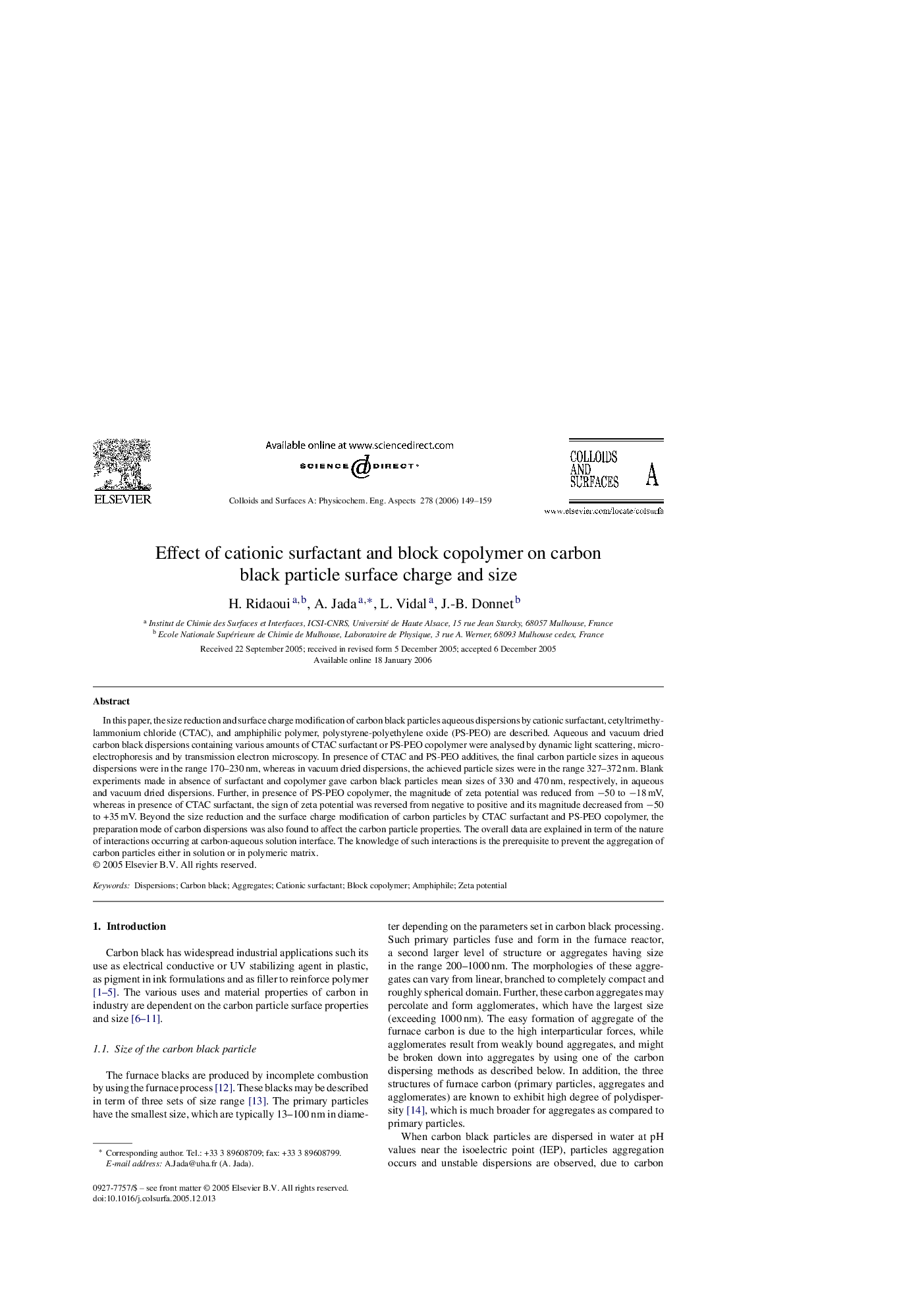| Article ID | Journal | Published Year | Pages | File Type |
|---|---|---|---|---|
| 598514 | Colloids and Surfaces A: Physicochemical and Engineering Aspects | 2006 | 11 Pages |
In this paper, the size reduction and surface charge modification of carbon black particles aqueous dispersions by cationic surfactant, cetyltrimethylammonium chloride (CTAC), and amphiphilic polymer, polystyrene-polyethylene oxide (PS-PEO) are described. Aqueous and vacuum dried carbon black dispersions containing various amounts of CTAC surfactant or PS-PEO copolymer were analysed by dynamic light scattering, microelectrophoresis and by transmission electron microscopy. In presence of CTAC and PS-PEO additives, the final carbon particle sizes in aqueous dispersions were in the range 170–230 nm, whereas in vacuum dried dispersions, the achieved particle sizes were in the range 327–372 nm. Blank experiments made in absence of surfactant and copolymer gave carbon black particles mean sizes of 330 and 470 nm, respectively, in aqueous and vacuum dried dispersions. Further, in presence of PS-PEO copolymer, the magnitude of zeta potential was reduced from −50 to −18 mV, whereas in presence of CTAC surfactant, the sign of zeta potential was reversed from negative to positive and its magnitude decreased from −50 to +35 mV. Beyond the size reduction and the surface charge modification of carbon particles by CTAC surfactant and PS-PEO copolymer, the preparation mode of carbon dispersions was also found to affect the carbon particle properties. The overall data are explained in term of the nature of interactions occurring at carbon-aqueous solution interface. The knowledge of such interactions is the prerequisite to prevent the aggregation of carbon particles either in solution or in polymeric matrix.
